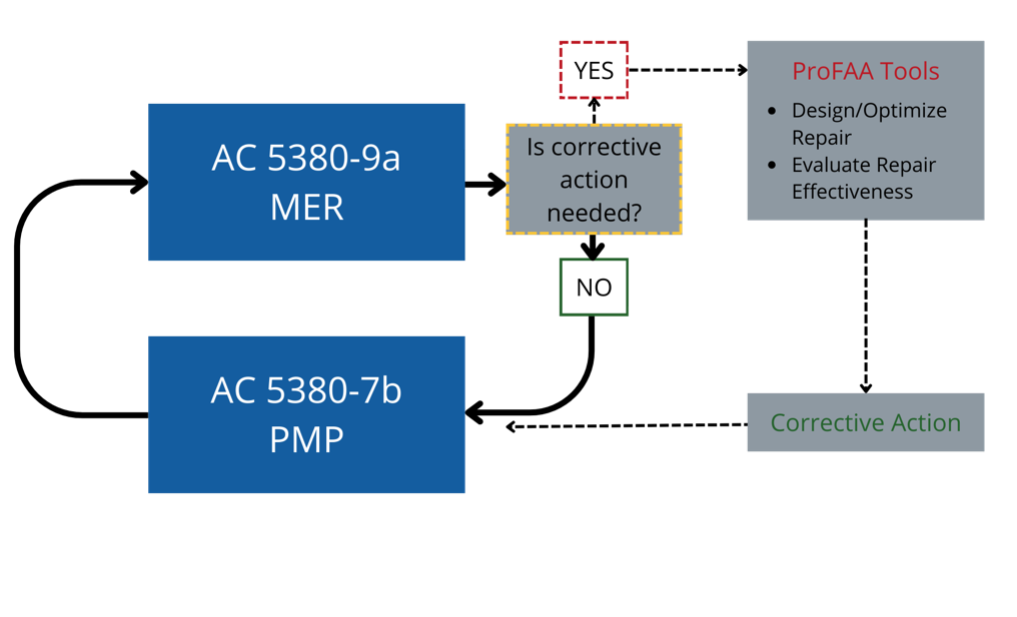Proactive Pavement Roughness Management
FAA research aims at developing a method that locates and quantifies airport pavement roughness, known as the Multiple Event Roughness (MER) analysis method. Comprehensive testing is ongoing to demonstrate its ability to identify single and multiple event roughness on runways and taxiways using measured profile data only. The FAA is in the process of updating its runway evaluation software, “ProFAA,” to incorporate the MER process.
During the research, several innovative ideas have surfaced. One such idea involves connecting FAA pavement evaluation Advisory Circulars through the MER method, integrated into the FAA’s ProFAA runway evaluation software. This new MER method will enable a user to simulate a corrective action to analyze its impact to pavement roughness. This concept, when fully developed, will empower users to proactively maintain smooth airfield pavements, extending their lifespan, and that of the aircraft they serve.
Figure 1 illustrates how FAA AC 150/5380-7 Airport Pavement Management and FAA AC 150/5380-9 Guidelines and Procedures for Measuring Airfield Pavement Roughness in conjunction with the ProFAA software, collaborate to track roughness growth and the corresponding corrective actions to extend pavement life.
This two-step process effectively links inspection results to corrective action procedures.
Step 1 involves conducting periodic assessments of pavement management. If the MER analysis deems all pavement sections “acceptable,” the roughness assessment passes until the next periodic evaluation.
Step 2 entails the detection of “excessive” roughness in any pavement section through MER analysis, triggering the use of ProFAA tools to make informed decisions regarding when and what corrective action to take. Early corrective measures reduce dynamic loads and extend pavement life. ProFAA aircraft simulation tools can also be employed to optimize proposed repairs and assess their effectiveness before construction begins.

Figure 1. Illustration of Tracking Roughness Growth, Taking Corrective Action, and Extending Pavement Life.
Several essential tasks must be completed for this vision to become an operational practice:
- Standard procedures for measuring and evaluating pavement profiles should be clearly defined.
- ProFAA, which currently simulates constant speed taxi operation only, needs updating to simulate more realistic operations like takeoff and landing.
- The aircraft currently modeled in ProFAA are older commercial jets and should be updated to represent a cross-section of today’s aircraft.
- The two FAA Advisory Circulars (150/5380-7 and 150/5380-9) require updates to align with the new proactive pavement management approach.
The MER process has already successfully demonstrated its effectiveness on over 70 measured runway and taxiway profiles, making it a promising method for ensuring the sustainability of airfield pavement infrastructure.
Learn More